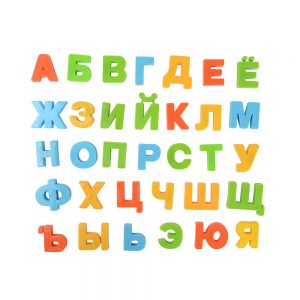
Russian language is one of the most widely spoken languages in the world with around 130 million speakers around the world. It is an East Slavic Language which belongs to the family of Indo-European languages and is officially used in Russian Federation, Belarus, Kazakhstan and Kyrgyzstan. More and more people are interested in learning the language, even though some may see it as quite a challenging one to learn due to the different set of alphabet it uses. To people who can’t read Russian alphabet, some of the letters may seem familiar but foreign at the same time. Familiar because they resemble Latin or Roman alphabet but flipped and turned in a way or another. Have you ever wondered why they look like that? Let us learn more about these Russian letters.
The History
Russia uses Cyrillic alphabet that was invented in the 9th century by Saints Cyril – hence the name – and Methodius under the commission by the Bulgarian Tsar Simeon I the Great. This script then became the foundation of alphabets used in many languages, including Russian. Cyrillic script is influenced by Greek uncial script that was commonly used from the 4th to 8th centuries to write Latin, Greek, and Gothic.
There are a several versions of Cyrillic script, and the one used in Russia has gone through several revisions. The first one was in the 18th century, when Peter the Great reformed it after he returned from his Grand Embassy in Western Europe. The original script was simplified and the new one became closer to the Latin alphabet. A few archaic letters were eliminated and Peter the Great designed new ones as addition like Я, which was inspired by the Latin R. Here, you can start to understand why some Russian letters are flipped.
How Russian Letters are related to Latin Script
Non-Russian may wonder if Cyrillic can be read like Latin words by remembering the shapes of the letters. The answer is yes, although some of the letters that look like flipped Latin alphabets are not related. There are a few ways to Romanize the Cyrillic texts, including transliteration to explain Cyrillic spelling in Latin letters, and transcription to explain pronunciation. These systems are especially important for beginner Russian language learners who still struggle with the Cyrillic script.
It should be kept in mind though, like what has been mentioned before, that some Russian letters that resemble Latin are not related to each other and pronounced completely different. Here are the examples:
- В : pronounced “V”
- Н : pronounced “N”
- Р : pronounced “R”
- У : pronounced “U”
- Х : pronounced “Kh”
And here are the Russian letters that look like flipped Latin:
- И : pronounced “I”
- Э or backwards E : pronounced “ay”
- Я : pronounced “ya”
Just like other languages that use non-Latin sets of alphabet, Russian may be challenging to be learned since it may feel like learning double; the grammar and the written form. But, in fact, every language only needs frequent use and some getting-used-to to become familiar and easy to learn.
In 1919, the existence of Cyrillic alphabet in Russia was threatened because there was an idea to replace it with Latin so that the nation could be in sync with the Western world. Gladly, this never turned into reality because of how true Russians were to their root. We can all still find the Russian masterpieces of literature in their original forms of Cyrillic. The nation never sells themselves out and this fact is one of the proofs. Surely changing their letters to Latin would make their language easier to learn by the world, but this can’t be the case. If people want to learn Russian properly, they are the one who should make the effort and never the other way around.
Russian Alphabet in a Nutshell
The original Cyrillic alphabet had 24 letters adopted from the Greek alphabet and 19 from the sounds of Slavic language. It has gone through many reformations by a few important Russian people; some letters eliminated and added and so forth. The set that is used until today is the one designed by Peter the Great in 1708 and it is considered to be the simplest one that can be used in a long time all the way to the modern time. Today’s Russian alphabet consists of 33 letters with 10 vowels, 21 consonants, and 2 that don’t convey sound. The shapes should not be confuses with their sounds – mark it, because it is an important point when you learn Russian. Theoretically, it is like when you see a yellow circle and supposed to remember the color not the shape.
There are many ways to write Russian alphabet just like most letters. In modern Russian keyboards, you can even choose the sort of font shape you like to represent the Cyrillic. However, if you learn to handwrite the letters, block and cursive shapes of the letters must be taken into attention. There are a lot of printable exercise worksheets you can find around the internet for free.
The Conclusion
So, in short, why do some Russian letters look like flipped Latin letters? It is simply because the designer made them so. Although the root of the original Cyrillic is Greek, there are no relationship between the current Russian letters and Latin or Roman letters. They just look alike but pronounced completely different. However, Russian letters can be transliterated and transcript into Latin to explain to non-Russians how the texts are supposed to be read. It is quite mind-juggling but really fun to learn at the same time. Think of it as learning secret codes, and you will get the hang of the Russian letters.
